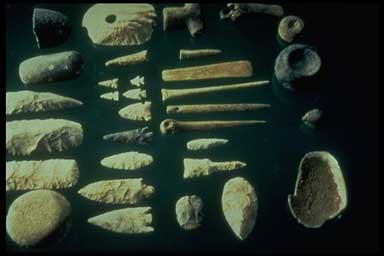Evolution may not be the most understood phenomenon in the wider public, there is no confusion among the academics and scientists about its significance and implications for mankind. All through the magnificent process of Evolution, there had been some defining moments that shaped the way for humans to become what they are now. One such pivotal point was our ancestors’ acquaintance with tools that not only helped them survive the fight for survival; it opened the doors to other creative milestones in the subsequent stages of human evolution.
In a recent discovery, archaeologists have discovered fossilized bones of animals millions of years old with cut marks suggesting people actually butchered them quiet skilfully. This evidence alone is momentous enough to alter our understanding of early human evolution. The reason being that such sophisticated application of tools was not known to have existed during the period the discovered bones belong to.
The findings reveal that the fossilized bones are 3.4 million years old; and that human’s distant ancestors had already evolved the ability to utilize tools in their favor, hundreds of thousands of years before the ‘Homo’ evolutionary tree emerged on the scale. So these early humans were not as primitive as paleontologists and evolutionary scientists had previously concluded; and this pushes back the earliest period of human use of sophisticated tool skills to 3.4 million years ago, 700,000 years before it was previously believed.

The tool cut marks are found on the fossilized bone fragments of a prehistoric antelope type animal, in another discovery same marks are present on the ribs of a buffalo (or a kind of buffalo that existed 3.4 million years ago).
It is widely accepted by the scientists that the first tools developed by humans were stone, and presumably they were used for hunting and defending against predators. Experts previously held the belief (backed by the conclusive evidence available to them) that early humans started carving stone tools as early as 2.6 million years ago; the conclusive evidence came from a discovery and subsequent study carried out in Ethiopia. However, the recent findings are forcing the archaeologists and paleontologists to rewrite the current understanding about the introduction of tools in the human evolution’s timeline.

The discovery of the fossils of ‘handyman’ a Homo-habilis from a culture called Oldowan, in Ethiopia, gave birth to the 2.6 million years’ theory about making of tools. According to Sonia Harman who is the lead researcher from Brook University New York says that the recent findings of tools from Lomekwi 3 site near Lake Turkana in Kenya are definitive enough to challenge the previously held notions about early man’s ingenuity of tool making that played a major role in his survival in the prehistoric world.
